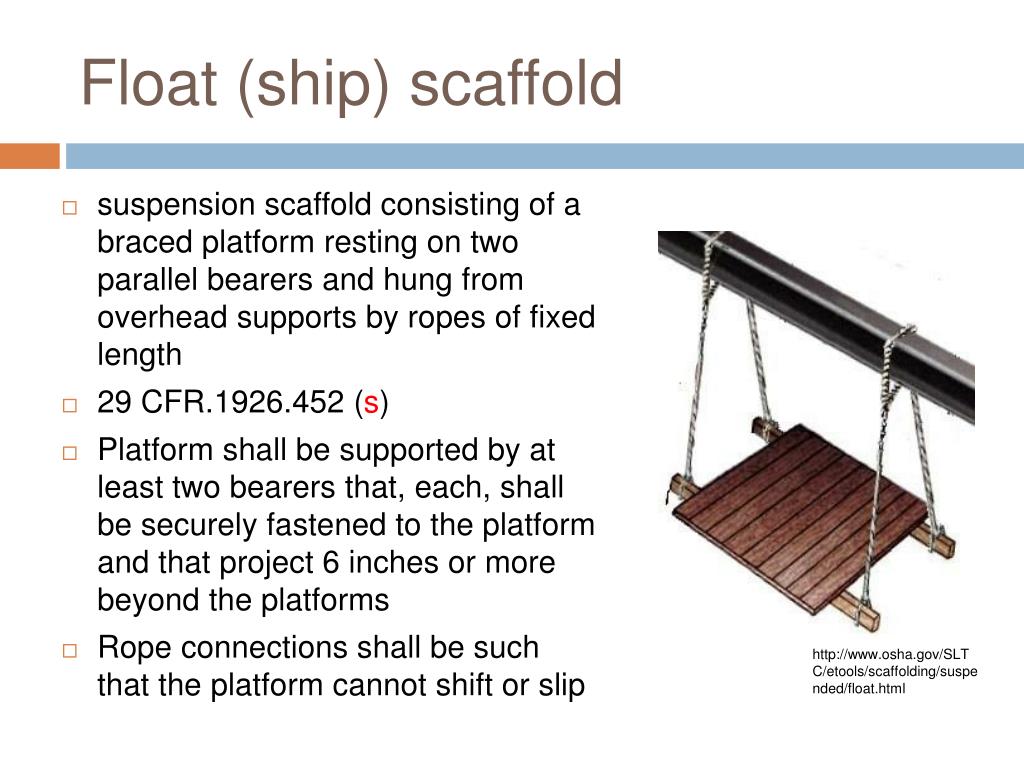

This appendix provides non-mandatory guidelines to assist employers in complying with the requirements of subpart L of this part. Most overhead power lines are not insulated and a safe distance will need to be maintained between the power line and the scaffolding.(Non-mandatory) Appendix A to Subpart L of Part 1926-Scaffold Specifications


Be aware of overhead power lines in your work area.Areas below scaffold work should be barricaded unless a protective canopy is installed.Do not let loose materials, tools or debris accumulate on any scaffold.Scaffold planks should extend over end supports not less than 6-inches or more than 18-inches.Immediately repair replace any portion of the scaffolding that is found to be damaged.Use only the safe means of access on any scaffolding.Scaffolds and all components shall be inspected by a competent person before each work shift, after changing weather conditions, or after prolonged work interruptions.All users must be trained to spot and report hazards. All employees who construct, use, inspect, clean, or dismantle scaffolding must be trained by a competent person.More important reminders when working on or near scaffolding in the workplace: Lock casters and wheels when scaffold is in place.This can severely compromise the strength of the scaffolding system. Do not mix scaffold components or force pieces to fit together when building the scaffold.Do not move any scaffold while employees are on them.Do not load a scaffold in excess of its rated working load.Do not work on scaffolds during high winds.Employees are prohibited from working on scaffolds covered with snow, ice, or other slippery materials, except to remove these substances.Do not use ladders or makeshift devices on top of scaffolds to increase height.An access ladder, stair tower or equivalent safe access shall be provided for all scaffolding.Employees shall not climb cross braces or end frames, unless end frames are designed to be climbed.In addition to ensuring there is proper fall protection, here are more safety tips that should be followed when working on scaffolding to prevent falls: OSHA Construction Standard 1926.451(g)(1)(i) states each employee on a boatswains' chair, catenary scaffold, float scaffold, needle beam scaffold, or ladder jack scaffold shall be protected by a personal fall arrest system. not be attached to hoisting equipment unless the system prevents the employee from walking off the work surface.While working at heights of 10 feet or more on scaffolding, employees must wear personal fall protection, such as a body harness, and/or ensure a guardrail is in place. OSHA Construction Standard 1926.451(g)(1) states each employee on a scaffold more than 10 feet (3.1 m) above a lower level shall be protected from falling to that lower level. Toeboard: 3 ½” high and secured to the platform surface.Mid Rail: midway between top rail and the platform surface.Top Rail: 38”- 45” from the platform surface.Guardrails must be used if performing work on scaffolding at heights of 10 feet or more to prevent falls. OSHA General Industry Standard 1910.28(b)(12)(i) states the employer must ensure each employee on a scaffold is protected from falling in accordance 29 CFR part 1926, subpart L. Untrained personnel, or lack of a competent person on site when scaffolding is in use.Unsecured planking, that may cause slips or falls.Electrocution, due to the proximity of the scaffold to overhead power lines.Being struck by falling tool or debris, due to lack of proper guardrails.Collapse of the scaffold, caused by instability or overloading.Falls from elevation, due to lack of fall protection.
#CATENARY SCAFFOLD INSTALLATION HOW TO#
Learn more about the proper use of scaffolds and how to prevent potential falls, injuries or worse.Ĭommon hazards associated with scaffolds are: When constructed and used properly, scaffolds provide a safe platform to complete work at heights and areas that would be otherwise difficult to reach. Scaffolding is a temporary structure used in many workplaces as a walking or working surface for work crews to assist in maintenance, construction, and repair.


 0 kommentar(er)
0 kommentar(er)
